There’s a certain swagger that goes along with shooting a hotrod rifle. It is the sort of thing that makes you act downright intolerable around your shooting buddies. People might tell you that money can’t buy your way out of bad shooting skills, but I’ve come to believe that this is only partially true. Spend enough money, and you can certainly outshoot some guys with much cheaper rifles. And when you buy a gun that’s straddles the line between “finely assembled” and “bespoke”, you find a certain mechanized perfection that’s not available in off the rack guns. The Underground Tactical Long Range Bacon Maker is one of those guns . . .
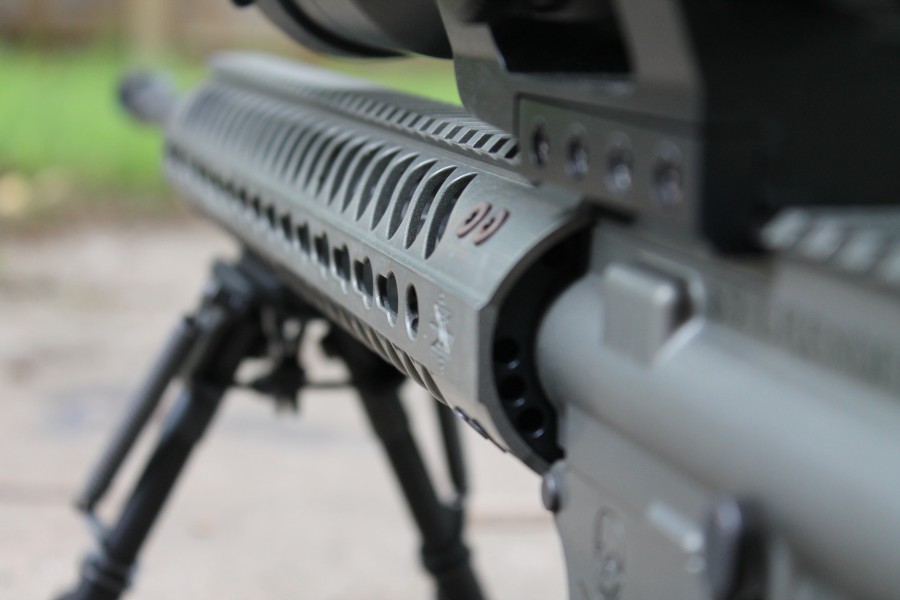
Laid out prone under a big oak tree that I know to be roughly 465 yards from a steel IPSC target across a big flat field at my parent’s ranch, I found that rare moment of zen. To my left is a case of Hornady’s finest 6.5 Grendel ammo. Out of the 24 inch barrel of the LR Bacon Maker, it pushes a slick little 123 gr. SST pill to 2518 fps from the muzzle. The Grendel needs that much barrel to get the bullet up to speed. It certainly compromises maneuverability, but laid out prone under that big oak, it doesn’t seem to matter.
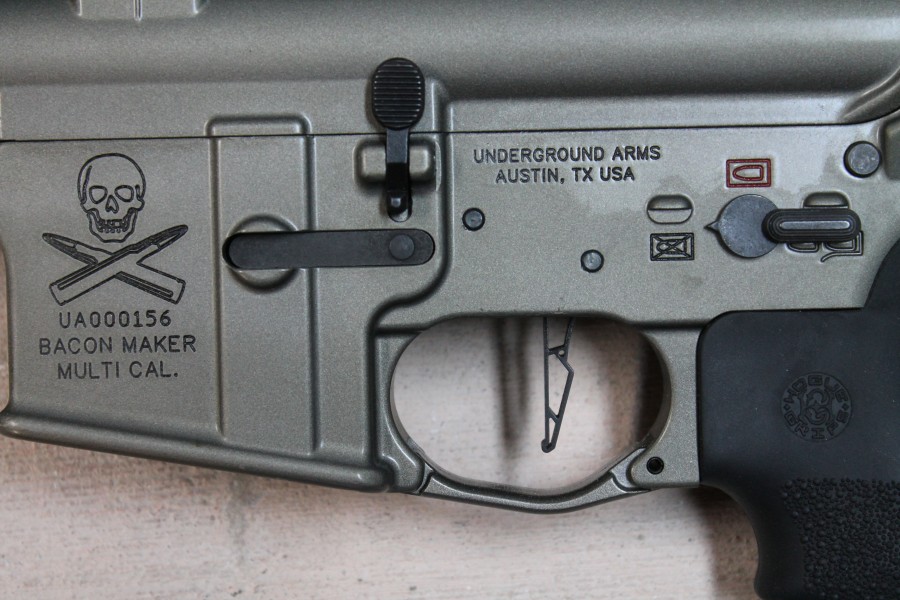
On the edge of my shooting mat is a ten round Magpul PMag loaded with five rounds of the aforementioned Hornady ammo. Loading more squeezes the polymer of the PMag too far to fit into the magazine well of the LR Bacon Maker. Five rounds is a good number of rounds anyway. The BaconMaker ships with one steel magazine which seems to be a little chintzy for a rifle that costs this much. Back to zen though.
In my left hand is my iPhone with a copy of “Shooter”. It tells me that I need to dial exactly three mils of elevation on the Bushnell HDMR that I’m using to help extend the legs of this gun. “Shooter” also tells me that I need to hold one mil for a ten mile per hour wind. I take a look through the scope to see that the mirage is rising almost vertically. I smile a bit at the perfectly calm day I’ve been handed. Looking back at my phone, I swipe the little wheel down to five mph and see that I should only hold half a mil at this distance. I make the elevation change on the HDMR, and exchange the iPhone for a loaded magazine.
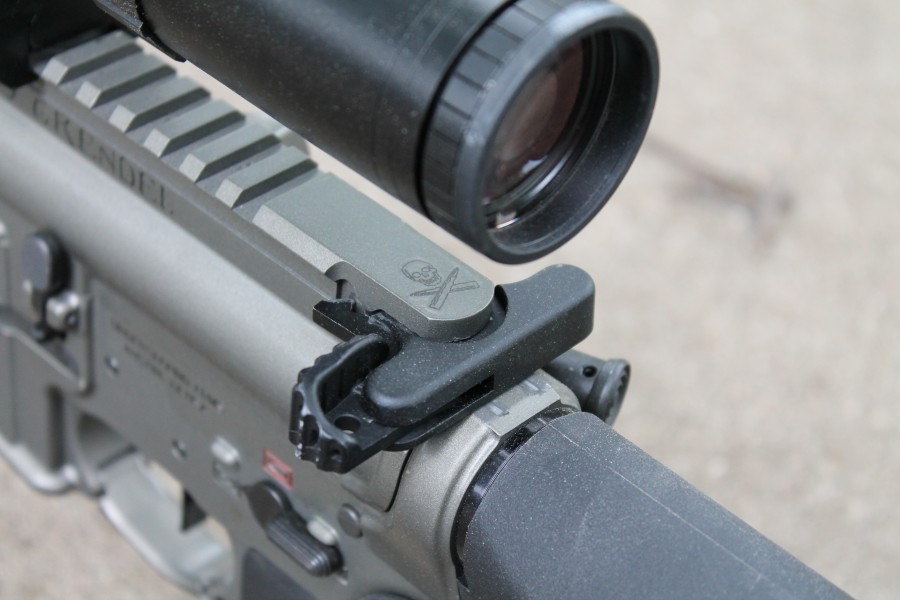
The mag takes a little persuasion to get in the well. I know that steel magazines probably don’t have this trouble, but the standard capacity magazines are a bit too long to work with the Harris bipod mounted to the Seekins rail out front. I press the bolt release and the bolt slides home.
I verify that the safety selector is still on safe, and then start my little dance to get settled. I start by wrapping my hand confidently around the sticky rubber of the Hogue grip. I push forward with my toes a bit to load the Harris bipod, and then I lay my cheek down on the now warm Magpul PRS. I fiddle with the knob a bit to adjust my cheek rise. One click up gives me a great sight picture.
Next, I squeeze my sandbag slightly to bring the crosshairs down where I want them. Last, I work from my toes to my stock laying everything I own as flat to the ground as I can. I smile again thinking about that granola yoga instructor who told me to find my center while I sat in a hot room sweating profusely and grunting. She should try this gun I think to myself.
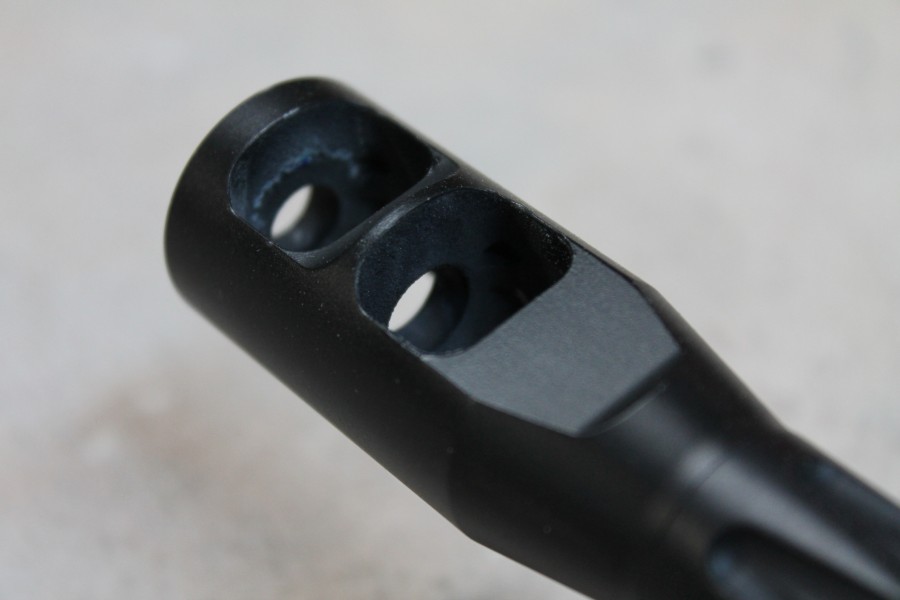
When I’m satisfied with my position, I line up my crosshairs, close my eyes, and give myself three breaths with my eyes closed. I open them, startled a bit at how bright it has gotten. My crosshairs are still lined up on the small dot I spray painted on the steel target some fifteen minutes beforehand. I glance around the target a bit and make sure my wind call is still correct, and I’m pleased to see that we still have relative calm at the ranch.
I take one last breath, flip the safety to fire, and rest the pad of my index finger on the slightly rough surface of the trigger shoe. I firm up the pressure on my finger as I exhale, and continue squeezing as I hit my natural respiratory pause.

Nothing really compares to breaking a glassy trigger right at the three and a half lb mark, any semblance of recoil tamed by the stout JP Bennie Cooley brake on the business end, and getting the crosshairs back on target fast enough to watch the last of a vapor trail terminating at a piece of hardened steel. A full two seconds after the first impulse of recoil, there’s a satisfying return from the steel to let you know that all that prep work was worth it. Four more just like it let you know that gun, optic, and operator are working in harmony.
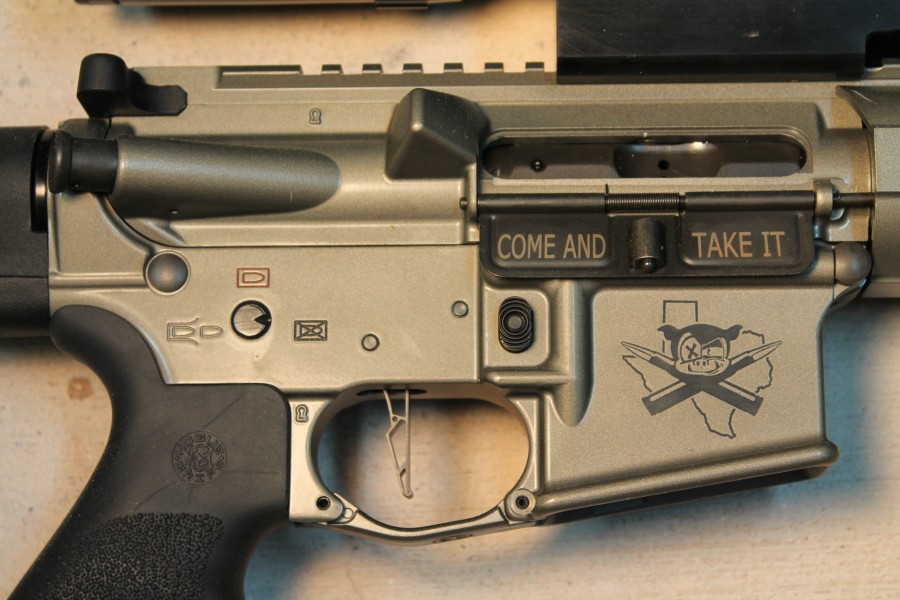
Cost
It takes a lot to make that harmony happen. As I proved in my preview article, a somewhat competent operator and a 4X scope can get the job done. But both that scope and I were attached to a gun that (as equipped for this test) cost north of $3200. There’s no getting past it. Underground Tactical wants a lot of money before they’ll let you have one of these guns. Some of that money goes towards function, and some goes to style.
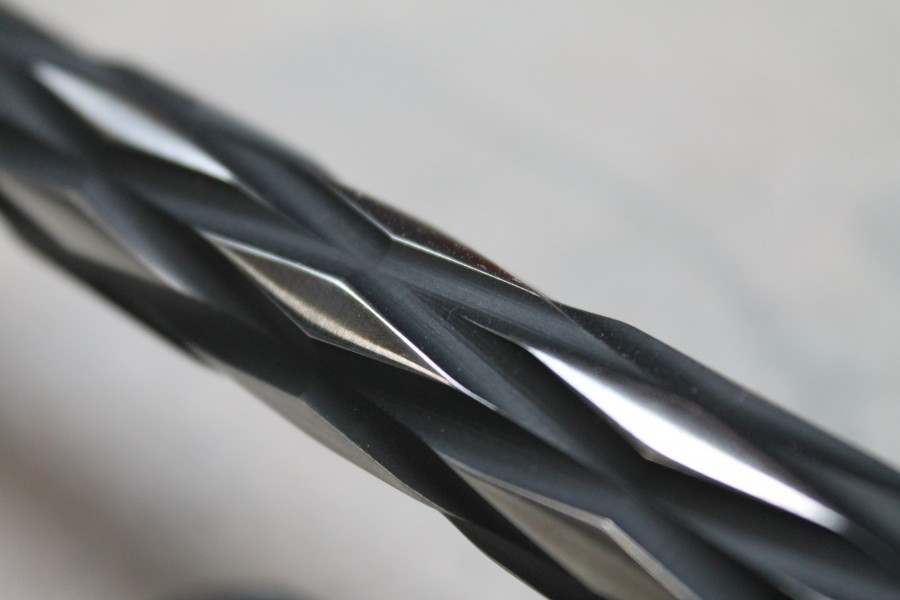
About the cost thing, the cheapest version of this gun runs $2695. Depending on what barrel fluting options you pick, you can add between $100 and $225 to the cost of the gun. The piston system is optional and adds $350 to the price tag. The JP Bennie Cooley brake is standard, but there’s seven other options that add between $10 and $60. A Harris bipod is factored into the cost, but if you’d like to add an Atlas, it’ll cost you $165. The model I tested with the fancy flutes and the piston system is $3270. The only way to make it cost more would be to plop an AAC 51T Brake to the front and swap the Harris for an Atlas bipod. Total retail price on the full boat model is $3495.
Piston System
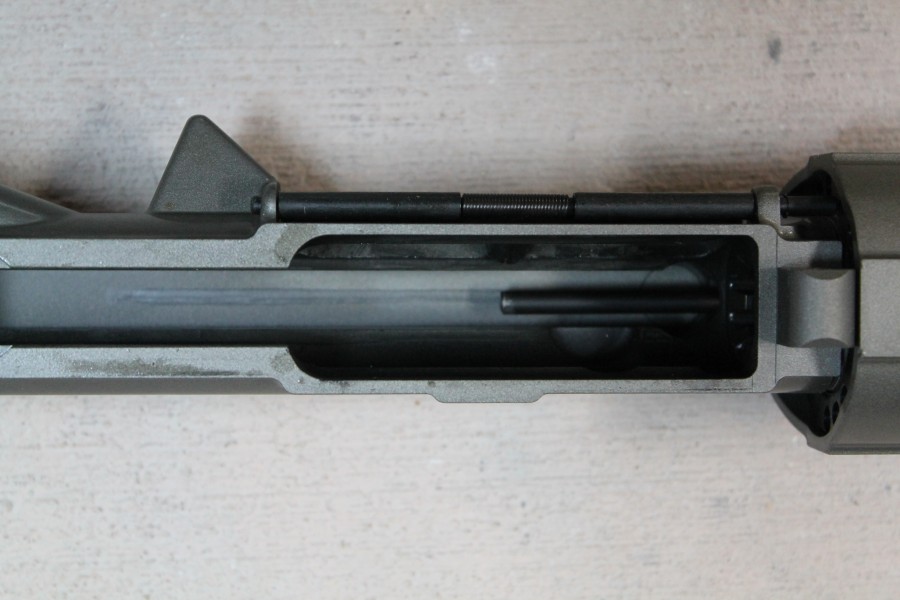
The piston system used by Underground looks exactly like a bigger version of the Osprey Kit I tested. Just like in my testing, it worked like a charm and kept the guns of the BaconMaker unbelievably clean. I’ve always felt that direct impingement was “good enough” but if you’re going to pony up this much money anyway, why not rock the piston too so you can spend more time shooting, and less time cleaning.
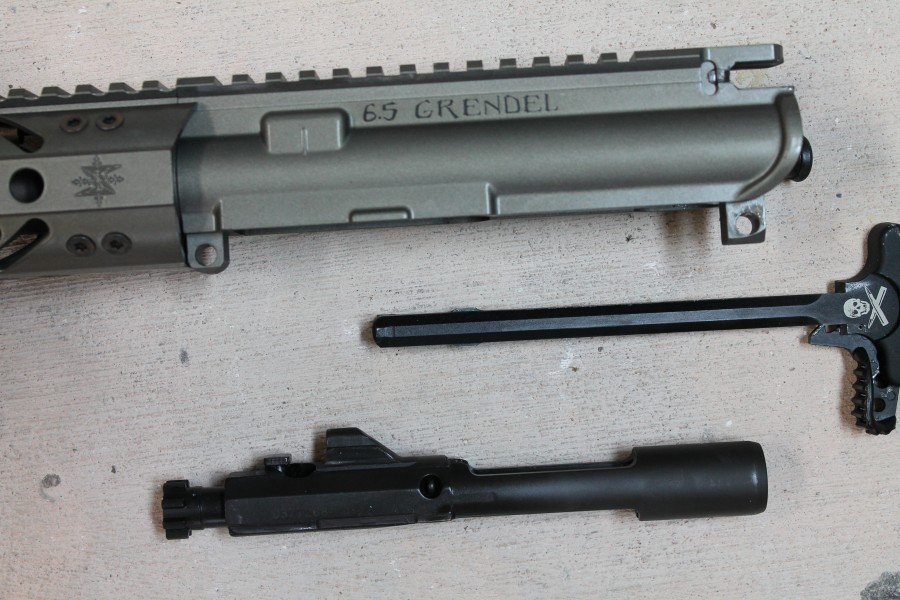
When tearing into the upper to figure out what the gas system guts looked like, I was surprised to see a pretty standard parkerized bolt carrier group. Again, for a gun that costs this much, you’d hope to see a nickel boron or similar coated bolt. Osprey offers a Fail Zero option to their kits that includes a self-lubricating coating. I’m picking nits, but for this much money, you’d hope to see a coated bolt under the hood.
Features
Starting at the butt and moving towards the business end, you’ll find some familiar names along the way. There’s the aforementioned Magpul PRS stock, arguably one of the finest precision butt stocks you can stick on a precision AR 15. The guts of the upper and lower receiver appear to be all made in house by Underground, though they probably started as forgings from one of a few companies that make such a thing. The hand guard is a free floated Seekins KeyMod unit. Twenty four inches of fancy black and stainless barrel fluting later, we arrive at the very effective, and very loud, JP Bennie Cooley brake. It took sixth place in Jeremy’s brake shootout, but I don’t care. It works like a charm.
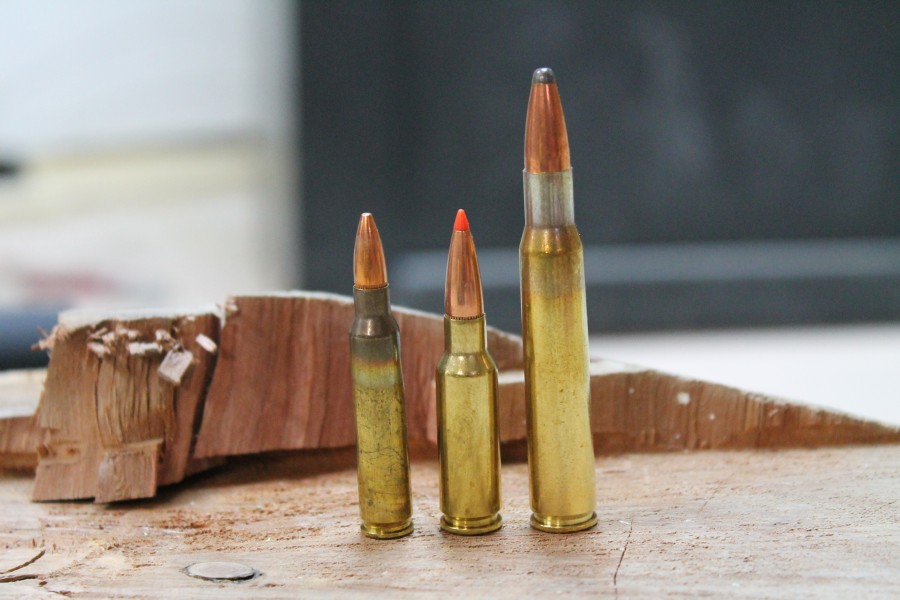
The Bacon Maker comes in three caliber flavors, 5.56 NATO/.223 Remington, 6.5 Grendel, and 6.8 SPC II. All serve their purpose, but in a truly short action cartridge I’m inclined to believe that the Grendel shines the brightest. Designed to work in the short magazine well of the AR 15 platform it pushes slippery 6.5 bullets that buck the wind better that even the nicest 77 gr .223 bullets and hits harder at distances the heaviest .300 BLK loadings dream about while they lay awake at night. Yes, I skipped over 6.8 in that comparison. Mostly because I think the 6.8 and 6.5 are so close in practical ballistics that it’s not worth chatting about too much.
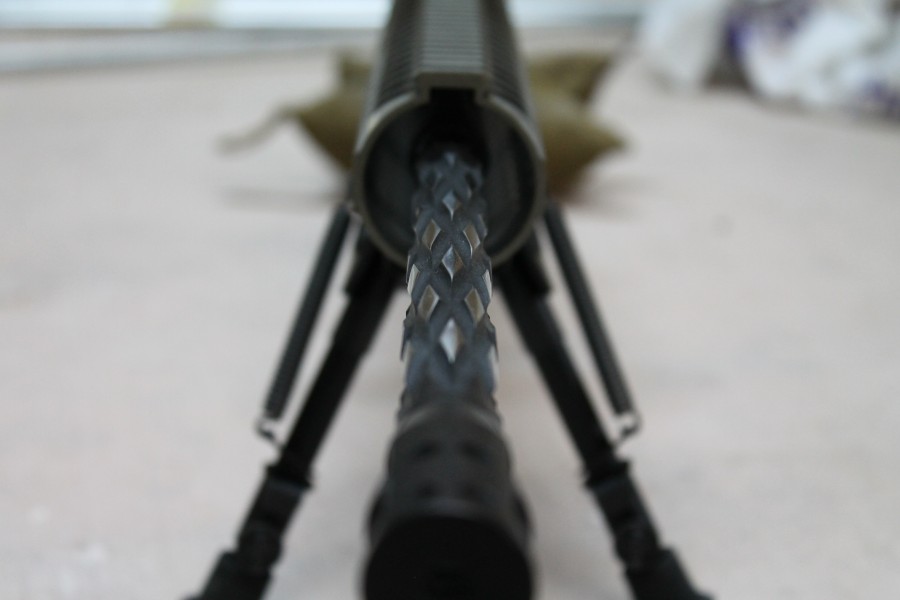
Yes, the 6.5 bullets do even better when taken from the relatively sedate 2500 fps offered by the Grendel to a more robust 2900 fps or so with a similar 120 gr projectile from something like 6.5 Creedmoor or .260 Remington. But inside of 600 yards or so — where this cartridge is designed to work, and frankly where most shooters can actually hit what they aim at — the Grendel is an admirable performer. Shooting the 123 gr. SST, it carries some 1000 ft-lbs of energy out past 400 yards, dipping below 750 ft-lbs a touch after 600 yards. It moves through the transonic zone at some distance past 1000 yards depending on the conditions. On a moderately hot 80 degree day at 2000 feet, “Shooter” tells me that 1200 yards is about that tipping point. That’s a mighty little cartridge, one I hope to test out on some pigs in late May at a piece of land whose owner sees too many pigs over morning coffee.
The Underground Bacon Maker is everything you’d come to expect from a very expensive AR 15, especially one chambered in an oddball cartridge like 6.5 Grendel. The fit and finish work on the receiver, bolt, and hand guard are totally free from defects or tool marks. The trigger is pure perfection, and the ONLY cosmetic blemishes I can find are some chipping in the clear coat over Cerakote, a touch of rust on the screws that hold the Seekins rail, and some faint tool marks in the fluted barrel. I ran 200 rounds of that Hornady ammo through the gun and got it to hiccup just once.
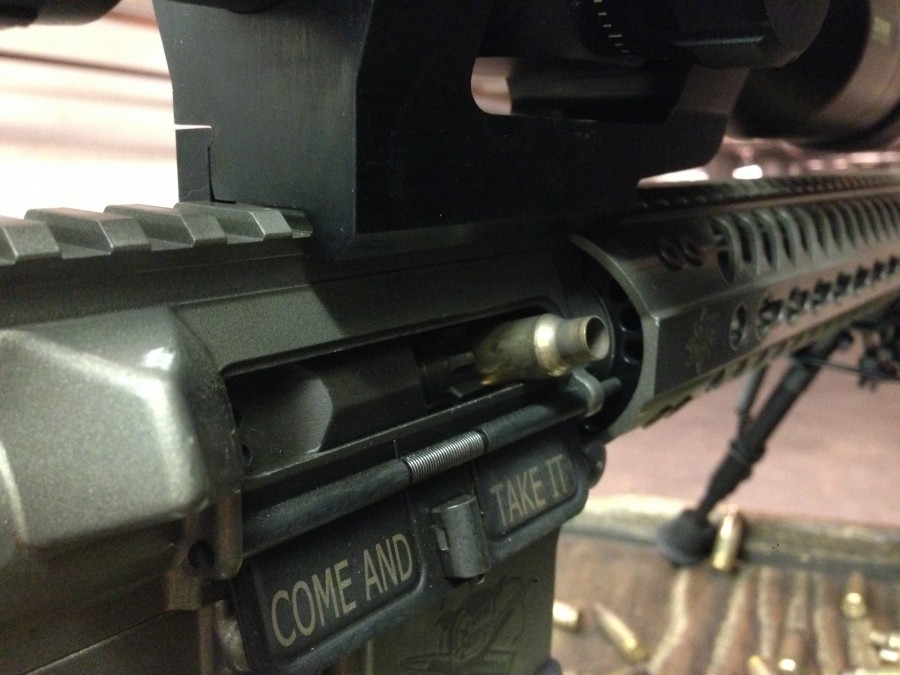
I’ve had this sort of failure a few times on guns that have had several thousand rounds through them. I’m of the opinion that when this happens the ejector has lost some of its juice and should be tuned up. My understanding is that this is not a factory fresh gun. As such, it has some uncounted thousands of rounds down the barrel, making this sort of thing par for the course. Though it seems to have largely been well kept, it does have a couple of blemishes.
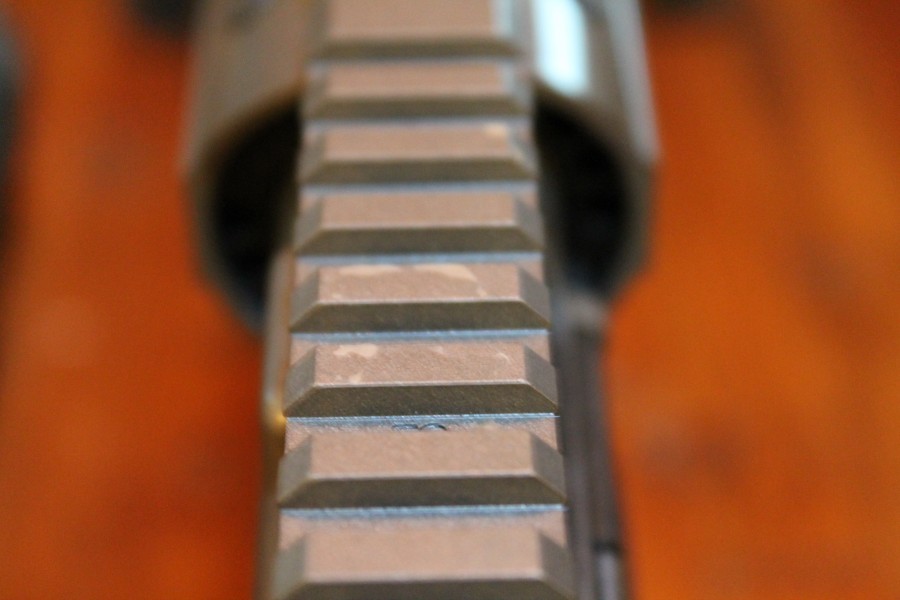
Finish and Function
The clear coat is a non standard option and one that Underground has only applied to two guns, both owned by Underground’s co-owner Jason Carter. I don’t see much of a point in it, since Cerakote is hard enough on its own, and I think the shine brought by the clear looks a little silly. Compound that with the fact that clear coat doesn’t want to stay put, and I’d opt out of this forever.

From a usability standpoint, this gun is set up just the way I like a gun set up. It features the Magpul PRS stock, a butt stock I’ve used with great success over the years and a common sight on any AR set up for precision work. There’s an adjustable trigger that breaks at exactly three and a half pounds — I didn’t feel the need to adjust it from that point. The charging handle comes with an aggressive large latch that helps pull back a bolt that feels like it is riding on glass rails.
The hand guard is KeyMod, which allows a tremendous amount of customization. And even though it tips the scales at over nine and a half pounds, it doesn’t “feel” that way at all thanks to a balance point somewhere behind the front takedown pin. It’s a long, and heavy gun, but it gives the feeling that with an aggressive Chris Costa grip and stance, you might be able to clean the local carbine match course.
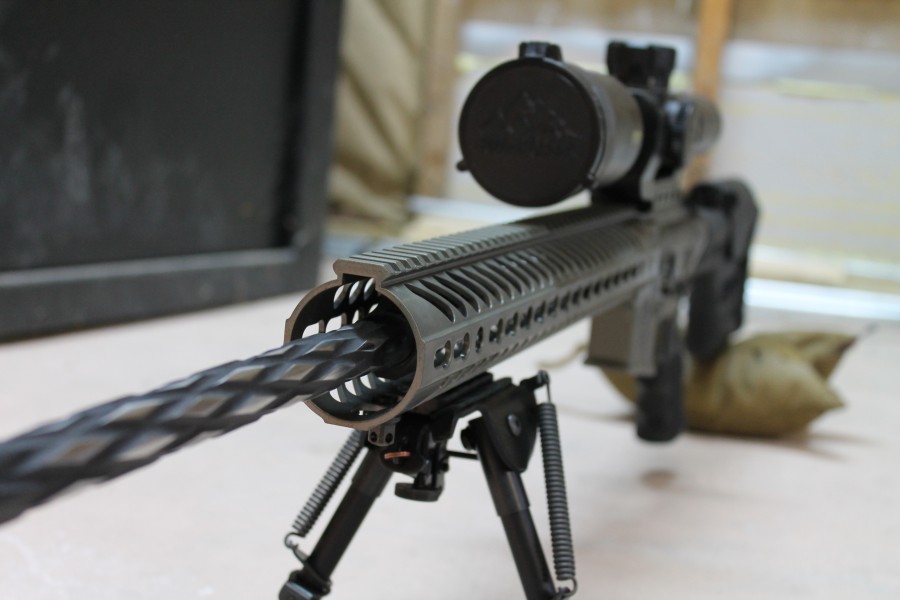
The only thing stuck to it from the factory is a Harris bipod, which led me to my only functional complaint with the gun: the implementation of a Harris bipod on a KeyMod rail. Obviously, this is a gun made to run a bipod. And any bipod on the front of a gun I’m using is going to get a workout. I get pretty aggressive loading the bipod on any long range rifle, and after a few cycles of that, I managed to break the mount that Underground elected to use.
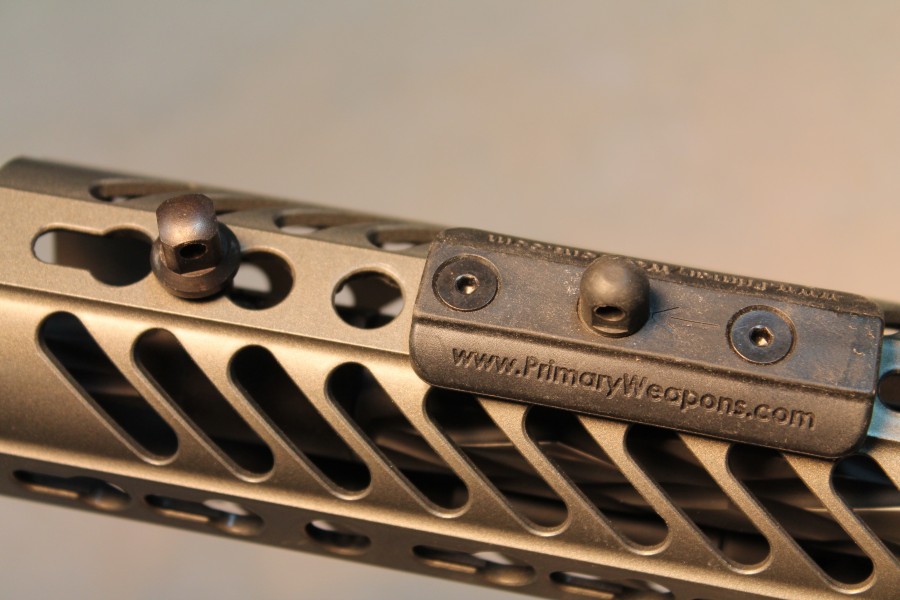
For some reason, Underground went with a small KeyMod “button” that locks into one slot and has a swivel on it. It probably works fine for attaching a sling to, but for rocking a bipod, it falls short. I managed to work it loose after about sixty rounds, and went to a Primary Weapons KeyMod/Swivel adapter when I got back from the ranch. I’m hard on gear, so maybe the Underground Guys haven’t run into this problem before. Either way, this is any easy fix, and on a gun this nice, it should be a no brainer to implement a rock solid solution. Luckily nobody was around when I rolled the gun one way and the bipod flew the other shedding hardware as it went. I certainly felt silly.
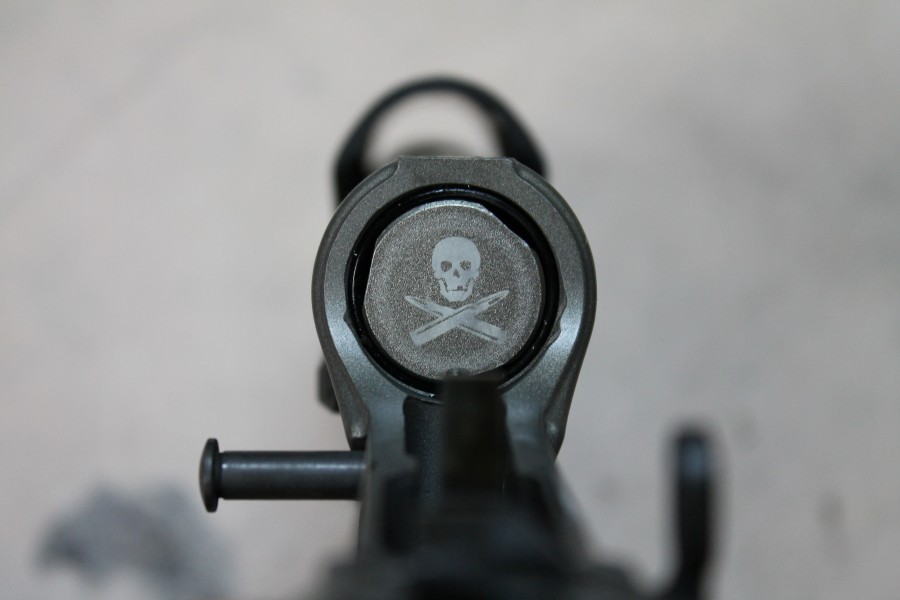
Aesthetics
Speaking of looking silly, the Bacon Maker I tested is 100% not my speed aesthetically. I like my working guns like I like my morning coffee. Dark, functional, and easy to carry. The Underground gun, while remarkably lithe for sporting a twenty four inch barrel is gaudy, ostentatious, and decidedly “showy”. There’s a certain type of person who likes this look, and I’m just not that guy. That said, if you like it, Underground can make it happen for you.
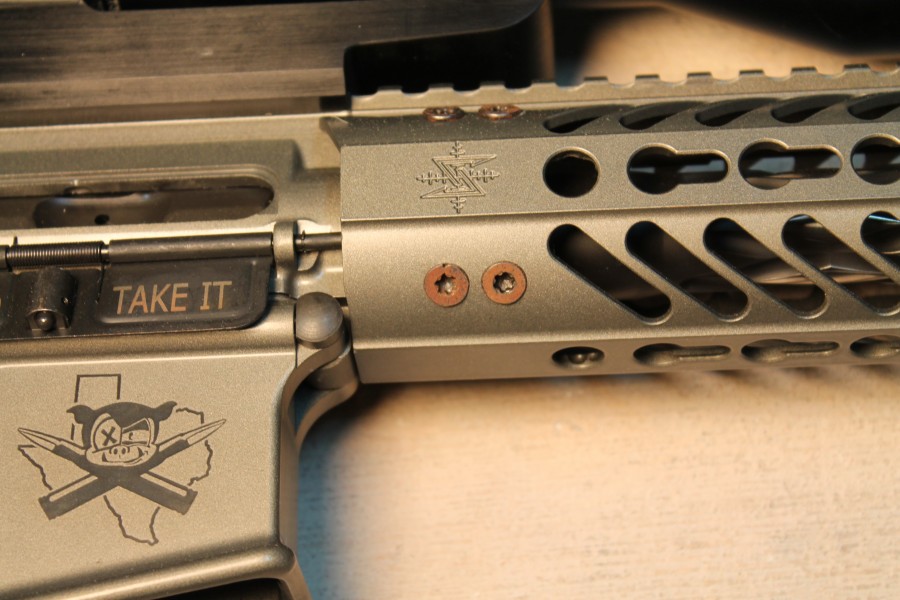
Unlike the Honda Civics I see on the highway with low profile tires and fat wings JB Welded to the trunk, the Underground BaconMaker is all show and all go. I ran two hundred rounds through it without cleaning and the only hiccup I had was the aforementioned failure to eject. It never did it again so I’m willing to look at it as a small blip on an otherwise stellar performer. I shot PMags and the (one) included steel magazine, and while the steel mags loaded easier, neither had trouble feeding the gun. As I do with guns on loan, I never cleaned it and though I felt the desire, I never lubed it. The only failure I experienced was the failure to eject.

Accuracy
In the accuracy department, with an appropriate optic, I was able to throw down five shot sub MOA groupings at everything from 100 out to 465 yards. I even put my sweet mother behind the trigger, and she put five on the steel IPSC target at 465. I’m certain that off bags instead of a bipod, with handloads, and somebody who isn’t a bumbling doofus squeezing the trigger, the gun is capable of more. Keep in mind that this gun has lived a hard life and came to me used with an unknown round count down the barrel. That it can still hold five shot groups under 1 MOA speaks to the quality of components being used. This gun is a shooter, no need to belabor the point further by talking about diminishing returns.
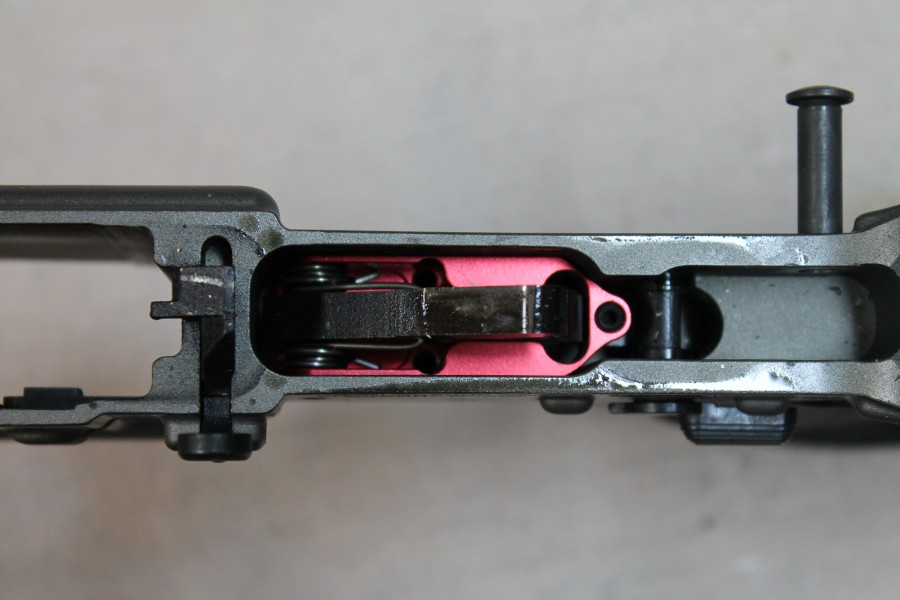
The trigger on this gun is pretty amazing, but there’s a caveat. While the trigger claims on the website to be Underground Tactical’s own in-house job, the trigger is actually made by a company called Elfmann Tactical. Underground Tactical designed the trigger blade itself and hired Elfmann to make the entire package. FYI.
Is it worth nearly north of $3000? Maybe. I don’t see it, but others who have bought the gun already apparently do. Are there better AR platform chamberings for long range work? Again, maybe, but I’d argue that 6.5 Grendel is a fine one to pick. Me, I’d forego the fancy piston system, the gaudy, though functional barrel fluting, and the various other add-ons to get the price down closer to the base model price if I were in the market. But if you’re looking for an out of the box 6.5 Grendel workhorse that will never let you down, you’d be hard pressed to do better than Underground’s gun.
Specifications: Underground Tactical Long Range Bacon Maker – 6.5 Grendel
- Forged Upper and Lower Receiver: Mil-Spec with Enhanced Flared Magazine Well and M4 Feed Ramps. CNC Machined of 7075-T6 Aluminum, Type III Hard Coat Anodized.
- Barrel: Match Grade 416R Stainless Steel Featuring Caudle 3 Land Polygonal Rifling. Standard/Medium Profile. 24″ Barrel Length
- Available Calibers and Twist: 6.5 Grendel “II” 1:8, 6.8 SPCII, 1:11, 5.56 NATO 1:9.
- Gas System: Choice of Direct Impingement or Piston. Rifle Length
- Muzzle Device: Bennie Cooley Muzzle Brake Threaded on and Timed
- Bolt Carrier Group: Mil-Spec Bolt Carrier Assembly w/Properly Staked Gas Key. Black Nitride.
- Bolt: Machined from 9310AQ (Aircraft Quality) Steel
- Receiver Extension: Rifle
- Buffer: H Buffer
- HandGuard: CNC Machined of 6061-T6 Aluminum. 15″ Free Float w/ keymod system and Monolithic Picatinny Top Rail (MIL-STD-1913)
- Buttstock: Magpul PRS Rifle Stock
- Pistol Grip: Choice of Magpul MOE, MOE+, MIAD, ERGO Deluxe or Hogue Rubber Grip with Finger Grooves
- Trigger Guard: Magpul MOE® Trigger Guard, Enhanced Polymer
- Trigger: Elfmann Tactical 3 1/2lb. Adjustable Precision Trigger, with custom Underground Tactical designed trigger blade. Runs on roller bearings. Choice of Flat or Curved. Adjustable from 2.5lbs to 4.5lbs
- Charging Handle: Underground Tactical Charging Handle w/ Tactical Latch
- Bipod: Harris Adjustable Swivel Bi-pod or optional Atlas bi-pod
- Rifle Case: Tactical Soft Case
- Magazine: One
- Sights: Sold Seperately
- Action: – Semi-automatic
- Made in TEXAS!
Ratings (out of five stars):
Fit, Finish, Function * * *
All of the parts that move in the Bacon Maker slide together like greased pieces of glass, though there were machining marks in the barrel fluting . There was also a poor connection between Harris’ fine bipod and Seekins’ stylish KeyMod rail. On a $1000 gun, I’d deduct only a star, but for a rifle that runs north of $3000, the bipod problems, the clear coat problems, and the machining marks earn the Bacon Maker a two star deduction. Seeing one failure out of 200 rounds makes that seem even more fair.
Real World Usage * * * *
This is a deceptively heavy gun that still measures forty-four inches from snout to tail. I think I’d pick another rifle to hump 10 miles a day through the wilderness, and thanks to the twenty four inch barrel, the Grendel needs to get up to speed, it is surely not a fit for shooting out of a truck. But for a sedate walk to a blind or flat patch of ground to shoot some critters at 300 – 500 yards, I think it is a fine choice.
Accuracy * * * * *
I’m unable to award anything less than five stars for a gun that holds right at 1 MOA for five shots at 465 yards using factory ammo off a bipod. Count me extra super double pleased to see this from a gun that’s had a lot of rounds pumped through it. I’d certainly love to see what the gun can do with some hand loading and a couple different bullets selections, but for out of the box work, you won’t be disappointed.
Overall Rating * * * *
I value function over form so the points I took off for chipping clear coat and subtle machining marks don’t impact the final number much. A poor implementation of a Harris bipod and one failure to eject is really all that stood between this gun and a really high four-star rating. Other than one hiccup, this gun is a reliable shooter no matter which way you slice it. It has all the parts you’d end up buying anyway, and for some people it looks cool as well. For my first crack at an Underground rifle, I’m very impressed.





My $4-500 guns have never jammed. Yet, you see again and again, $1-2000+ custom guns jamming. That’s unacceptable.
Give it time, and yours will too.
Good review, and a sharp looking, accurate rifle. I’m not averse to spending $3000+ for a rifle that shoots well, but would personally never blow that much coin on an AR. Rapid, accurate follow-up shots at 400yds+(multiple target situation), isn’t something I’m good at. Hell, I’m barely decent out to 100yds.
Every firearm, hell, every piece of machinery, fails eventually.
Eventually, sure. But that doesn’t excuse a 3000 dollar gun from jamming within the first 200 rounds. My 400 dollar glock has 5000 rounds through it with no hiccups and my 1400 dollar ar is sitting around 2500 with not a single issue. A gun with a comma in the price tag should fail once every couple thousand of rounds, not once every couple hundred
I’m guessing you missed the part about it being a “loaner” gun(possibly the company owner’s), with an unknown round count.
After probably over 2000 rounds of varying ammunition through my AR-15 (Bought peice by peice for bargain prices, such as an 80 dollar barrel that produces three shot groups that could be covered by a pinky at 100, and easily takes the caps off of water bottles at 200, a 30 dollar low profile gas block, polished mil-spec trigger group), I had four fail-to-fires in a row, with no strikes on the primers at all. Had to replace the firing pin.
Everything fails eventualy.
Tolerances, DV. The tighter they make them (to make those high end guns shoot sub MOA) the more “finicky” the end product is going to be. There’s a reason milspec = 2-3MOA – the tolerances have to be loose enough to allow function in Iraq or the arctic. Cheaper = looser tolerances = runs better.
DJ, you are confusing Tolerances with Clearances. Tolerances come into play with the manufacturing of the same parts. You want your Tolerances to be high. If you don’t have high tolerances when you manufacture parts, that means a lot of hand fitting, and no ability to just put a replacement part in there and go. Clearances typically deal with how much space different parts have to work with each other. Guns like a AK-47 are built with with generous amounts of clearances. You can have a gun that is built to extremely high tolerances and have good working clearances. The 1911s that were made for the US military before the end of world war 2 are a good example.
And Milspec has nothing to do with a gun being 2-3MOA. My issued MIL Spec rifles were all 1MOA or better guns when new.
And you’re confusing clearances with allowances. Clearance is generally only used when discussing transportation systems and for everything else, such as manufacturing, the term is allowances.
So why not go all the way and chamber in in .308? Ive got nothing against 6.5 Grendel (although I’m not a fan of 6.8) but if you are going to be spending that type of coin on (essentially) a designated marksman rifle, why wouldn’t you go with a loading that fits the bill a little better? Not to mention that you are going to be spending darn near the same for 6.5 as you would for a .308 and the .308 is going to have more range, better magazines, and higher energy on target. Don’t get me wrong, if someone could produce the 6.5 for cheap I would be on that like flies on sh&% for a 16 inch AR but for a 24 inch barrel i want a .308.
The Alexander Arms uppers are pretty reasonable and shoot well, but aren’t at all pretty. I must have taken 50 – 60 hogs with my 14.5″ version shooting 120 gr TSX’s. I think I paid around $750.
Oh no for a 14.5″ i think that it is a great loading and like i said, I would love to build a 16″ in 6.5. Im not necessarily talking about the cost of the upper, I’m talking about the cost of the cartridge itself. To feed a carbine or a mid length in 6.5 is ridiculously pricy. Not only that,I was speaking more to the 24″ upper that was reviewed above. With that much barrel and spending that much on ammo, why wouldn’t you go with .308?
I agree. The length of the system is what you should be paying the big bucks for, get it as short and maneuverable as possible. That is why you’d go to a unusual cartridge like a .300 blk, and its way high cost per round. If you’re accepting the overall length and the weight that comes with a 24″ barrel, gimme a standard cartridge, and .308 is about the best I can imagine.
Because the .30 cal projectiles available to attain the sorts of Bc’s you can with much lighter pills in the 6.5mm (0.264″) range are very heavy and too long for magazine-fed rifles. Same problem you run into trying to make the .223/5.56 round into a long-range round. You run out of magazine length, and you might even need a chamber cut with a long throat, to achieve the same ballistics you can get “out of the box” in a 6.5 or 7mm (0.264 or 0.284″) diameter bullet.
There’s a reason why so many accuracy/long-range shooters have migrated to 6, 6.5 and 7mm bullets. The days of the .30-06 ruling the roost in long range shooting are over, the .308 never quite owned the 1,000 yard match issue, and the .223 never will.
A 6.5mm pill, from 123 up to about 142 grains, launched at moderate velocities, and you have a winner, especially if you’re using the very slippery 135+ grain pills with G1 Bc’s over 0.5. If you want to understand this issue completely and competently, you could do much worse than to start reading articles and books written by Bryan Litz, a ballistics engineer for Berger:
http://www.bergerbullets.com/form-factors-a-useful-analysis-tool/
Look at the bullet chart comparing G7 form factors. Just look at how many “green” entries are in the rightmost column, and you see quickly how the .223 and .30 cal bullet offerings just aren’t there for long-range work.
Now, if you really want a bullet that hangs up there, go get a .338 bullet launching device, load up some of the 300gr VLD’s and watch what happens. You might want a good recoil pad, because something like a typical hunting rifle in .338 WM launching a 300gr pill is going to thump you pretty well.
I have no doubt that the statistics back you up. Im talking about practicality and effectiveness on target at 1000 yards. The 308 has been used in a theater of war for years at 1000 yards or farther and has been effective past that. For the price, I fail to see what you get out of a 6.5 that you don’t get out of 308. What you were talking about with regards to magazine length, the review clearly stated that there is a problem with the factory magazine. There are plenty of quality manufacturers of 308 magazines out there and it does provide more energy on target than the 6.5. The price of the magazines, ammo, and scopes that are preset to 308 are all going to be far less than modified 556 accessories for the 6.5 and are going to work better. I am sure that the cartridge is amazing at range but i still don’t think that it is enough to justify this build. At 1000 yards and for the price you are still better off with a 308 and you are going to get more “bang” for your buck.
I concur with DG. I’m not sure if the 6.5 Grendel is optimized for reliable feeding in a AR platform (whereas the 6.8 SPC was designed with feeding in mind), but the high BC 6.5 bullets are wonderfully efficient. There just isn’t enough capacity in an AR-15 length case to push bullets much past 2500-2600 FPS in the 120-140 range. Using efficient bullets does wonders, though.
The most efficient 6.8 SPC load I’m aware of used a 140 grain bullet with a G1 BC of .487. I don’t think that load is even currently still being produced, and may have even used CCI 450 “mag” primers. That’s decent, but the 6.5 can do better at long range while maintaining the popular ergos and handling of the AR-15 platform.
My question remains though. If you had the option of having a 24″ AR in 6.5 or a 24″ AR in .308 which would you choose? In my opinion I can get reliable magazines out of magpul for the .308, I can find optics easier for the .308, and I can buy bulk .308 (somewhat) cheap and it is fairly readily available. Not to mention practically zero change in effectiveness at combat ranges (or common bacon hunting ranges)
My answer to your question, would be – if you want an AR chambered in .308 – get a FN FAL.
If I’m paying money for a .223 AR or a .308 AR, then I’m going to choose neither. I’ll choose a .308 AR chambered for .260 Remington, 6.5×47 Lapua or 6.5 Creedmore. I’d probably prefer the Lapua, because it would give me more room for seating long VLD pills properly. They all use the 0.473 bolt head cartridge, so the BCG’s for a .308 will work, the cartridges are going to use a box magazine meant for a .308, etc.
I’ve said it before, I’ll say it again: Pick the pill you want to launch based on the ballistics, then figure out how to launch it. For long range work, the place to start is 6.5 or 7mm pills.
Personally, I’m going to put together an AR-10 in .308. I’m looking into an 18″ 416R stainless barrel. The 6.5 and 7mm projectiles are slick, but .308 is incredibly handy and plentiful. Plus I have a .338 Lapua for long range, as well as a 6.8 Spec II and 300 BLK ARs.
That would also be entirely changing platforms. The 6.5 Grendel can be chambered in an AR-15, while you have to go to the AR-10 to use .308. So you end up with a larger, heavier rifle. Comparing 6.5 Grendel to .308 is apples to oranges.
Well judging by the scale in the pictures above, its weighing in at 9.6lbs and there are plenty of ways to build a quality 308 for under 10 lbs so what weight are you really saving? once more, you are also going to be spending a whole lot more on accessories and ammo for the 6.5.
As someone who feeds both a grendel and a .308, I can assure the the 7.62/.308 ammo is DEFINITELY more expensive than grendel ammo. Depending on which rounds you’re comparing, its anywhere from a slightly pricier to three times as much. And are you seriously trying to argue that AR-15 accessories are somehow MORE expensive than accessories for an AR-10 style rifle?
You can find Grendel ammo at reasonable prices if you shop around. A month or so ago I got a few hundred rounds of the steel cased wolf stuff for around $0.25/rd. I can get the hornady loading for around $0.30/rd if you shop smart (wait for sales/discounts, etc). Its a little pricier than .223/5.56 but not that bad. And while .308 packs a wallop in the closer ranges, its a pig aerodynamically and sheds energy much faster than a grendel. Depending on which .308 and Grendel loadings you want to compare, the Grendel actually has MORE energy than the .308 from around 600-800 rounds. Some of the other advantages are cost, weight, and recoil. An AR-pattern rifle in .308 is going to cost you more to build than one in grendel. I know the rifle shown here is a VERY expensive top-end piece, but an AR-10 style rifle built to the same level of performance, finish, etc would be even more, significantly so. The ammo itself is costlier. The recoil is about twice that of a grendel. The ammo and the gun itself will be heavier. Of course there are things that a .308 can do that a Grendel can’t. But you can’t deny that the Grendel is a contender and does have some significant advantages for a lot of applications.
The silver is a little blingy for me, and once you spend that much money (3k+), I start looking at JP’s LRP-07.
FWIW, JP’s base rifle in 6.5G with a magpul PRS is running $2630, and it’s a low mass BCG and adjustable gas.
Lot’s of options once you spend that kind of coin.
It’s true it is a little blingy but my understanding is that this rifle was built as an example of how decadent Underground Tactical could make one of their guns.
Not sure that fluting makes any sense. Does it?
Sure is heavy though.
I’ve always been under the impression that it has the ridgidness of a bull/target barrel but the flutes give it more surface area which helps it cool faster. Also weighs less than a bull/target barrel.
I should have wrote “the whole gun sure is heavy though.” I do imagine that that barrel is lighter than a bull and cools faster too, but it is hard to imagine that it is much stiffer than a barrel of the diameter of the bottom of those flutes.
Well, no, but bling will be bling.
In terms of barrel rigidity, that cross-hatch seems the opposite thing to do. How is that in any way superior to straight flutes run down the barrel?
edit:
You have additional mass with little or no stiffening… The end of the barrel may even be more ‘whippy’.
Well, you’re right, but I didn’t want to divert the thread down a rat-hole of engineering arcania.
@Dyspeptic
Everyone loves it when you do that. Don’t ever hold back.
Looks pretty gimmicky all around.
The price seems more than a bit excessive. I can build the same SPR from parts for about half of what they are charging.
Upper:
Barrel: $250
NiB BCG: $130
Muzzle Device: $100
Gas System: $50 (DI)
Upper+Hanguard: $350
Charging Handle: $50
Total Upper: $930
Lower: $80
Trigger Pack: $200
PRS Stock: $200
Buffer Spring System: $200
Grip: $50
Fiddly Bits: $50
Lower Total: $780
Rifle Total: $1710
Just built an 6.5 AR. The bolt was the hardest thing to source (I wanted a BHW barrel, and they don’t do bolts, so…)
I’m getting ready to rebuild my .308 DMR. The only thing I can’t find is an MLOK 15″ monolithic upper. Aeroprecision has something in the pipeline in their M5E1 line so I am waiting for that to come out.
$3.2k for a ~10#, 24”, 6.5 AR to make hits on steel at inside of 500yards?
Oh, and
– Cheap mag
– Flaking finish
– Standard bolt
I suppose it makes sense to someone
OK, I have a question about the barrel. You say “match grade.” I hear that all the time.
To me, the nut of a real match grade barrel is that it had the rifling cut with a single point cutter (ie, the way that Krieger and Bartlein cut their barrels), then it was stress relieved. Then I’d want to know how the chambering was done.
I always thought “match grade” referred to being held to a specific (very low) tolerance runout?
When Douglas (and Shilen and others) starting using the term “match grade,” it means that they’ve air gauged the barrels and found that the hole diameter was held to within 0.0001″ diameter variance from one end to the other. A typical hunting rifle barrel might show variance of 0.0005″ from end to end. The habit of gunsmiths is to put the narrower hole at the muzzle end. Barrels typically come marked on the breech end, and if they were lapped, they’re slightly belled on the ends, and the gunsmith has to lop off at least an inch on the muzzle end to remove that belling.
But air gauging a hole to show that it is of uniform diameter is just one issue. As you shoot multiple rounds, a barrel heats up (obviously), and this heating will start to cause bound-up stresses in the steel to manifest themselves as changes in the point of impact.
Making a barrel can impart more stresses into a barrel than the steel had to begin with. For example, the button rifling process imparts coaxial distortion in the steel as the button is being pulled through the barrel. The hammer-forging process is pounding stresses into the barrel at a very high rate. Only single-point cutting of the grooves imparts the least amount of stress into the barrel, so that’s the type of barrel that long range match shooters prefer, hands-down, in benchrest, F-class, Palma, etc.
This is all before we get to the issue of fluting, which can cause more bound-up stresses in the barrel to be exposed. Rather than putting stress into a barrel, fluting can remove stresses on a barrel blank in an uneven manner, meaning that a flute on one side without a matching flute on the other side might leave you with a barrel that wants to warp on heating, unless those newly exposed stresses are relieved.
I had to read that a couple of times, but that whole comment was interesting and informative. Thanks.
And the 7mm08 launches a bullet of the same weight and the same speed downrange as the .308 for less powder. I’ve never understood the adherent to 30 cals.
My long range gun shoots a .338wm launching a Berger 250gr hybrid otm at 2550fps, mostly because wind calls are hard and this makes them less so.
I remember my dad many years ago had a screwdriver with the same kind of fluting. It was a “push/pull” driver.
I don’t know what caliber it was (the driver) but I know it cost a hell of a lot less than “north of 3K”
That’s called a “Yankee screwdriver”. I used the hell out of mine before power drills became cordless.
Regards,
Steve
Heck, I use one everyday at work still, especially since they take standard bits now.
You’re referring to what is known as a “Yankee screwdriver.” They used to be made by Stanley, and cabinet makers, sheet metal men and handymen loved them for shoving phillips head screws in pronto-fast before cordless drills/drivers.
Blech boutique ARs…
At least this one is in grendel.
Uh … I’m going to go with an AR10/LR308.
This is the kind of puff piece that belongs in a gun magazine. You need a towel to clean that stuff off your nose? This gun is a joke. For $3k it should be amazing. If it cost $1500 then you could go easy on it, but this thing is priced at the very top end of the market. It should perform at a very high level, and clearly it did not.
I think its about the right tool for the job. I have an ar pistol in grendel for short range deer and hogs, a 16inch grendel carbine, and just built a 22 inch 6.5 creedmoor that weighs the same as the gun reviewed. I think the grendel is best with shorter lighter barrels and carbines, if u r gonna build a rifle go creedmor imo,
Also i second bryan litz’s books there the best data out there for long range shootimg
Curious why you don’t test “accuracy” off a lead sled or similar contraption. Telling us the “accuracy” (as opposed to precision) of a rifle when said rifle is subject to all manner of shooter-induced error is not all that helpful. We need to know what the gun can do when all outside influences are removed.
Cool rifle
Before I parted with the Bacon Maker Ultralight in 6.5 Grendel, I will say it was the best shooting rifle I have ever owned. The trigger was downright amazing, and the it ran reliably with the 200 rounds I put through it.
I know a lot of people will say they can build a gun that works as well for a lot less, but what you also might want to factor in is resale value. Mine was valued at $1800 new from the factory and I put 200 rounds down it. Yet I was still able to sell it 2 months later for $1700. That is a value retention of 94%. Try that with your parts built rifle and I bet your number comes in closer to 70 to 80%. Doesn’t mean much if your interested in keeping it for life I know, but it is something to consider.
Nice gun, less so on the price. One day, perhaps…
I’d love a gun that nice.
I suppose if you can afford the gun you can afford the ammo.
i suppose bacon is worth it.
I’m in New York. No bacon for me.
I’ll be extra good this year. Hear that, Santa?
That’s a nice gun, ma.
I love the Elft trigger
I have owned 2. The first was a .556. It ran great but wasn’t suited to my needs. So when I stopped by the shop and asked for more power and an AR10, I was introduced to the 6.5 Bacon Maker. Jason sold me on 6.5 and all I needed to do was pick the options. FDE, Ultralight (7lbs), 18″ barrel, 3.5lb trigger, custom engraving, and piston. Had a Grendel engraved on the lower receiver. It made the gun mine, one of a kind and ready in about a week.
I love it and so has everyone who has had the pleasure to shoot it. It does the job for me and it makes bacon http://www.hornady.com/team-hornady/scrapbook/big-pig-matt-v .
It may not be for all but for me well worth the 2400 I spent. I don’t have the LR but still make consistent hits at 500 yards and can drive nails at 300. I could have spent less but would not have received the personal one on one interaction with the manufacturer and its one of a kind.
If you love to wear hoodies? so get this amazing Feel The Beat Hoodie Moreover, it has a hoodie-style collar with a pullover front closure and rib knitted cuffs to hold your wrist. All these amazing features make it one perfect casual outerwear to get compliments from your fashion friends. Discover now the best deals and amazing prices.